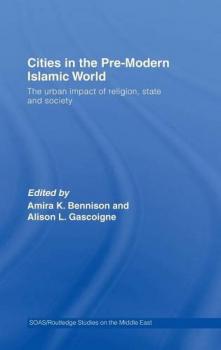| London: RoutledgeCurzon (2007) |
This volume is an inter-disciplinary endeavour which brings together recent research on aspects of urban life and structure by architectural and textual historians and archaeologists, engendering exciting new perspectives on urban life in the pre-modern Islamic world. Its objective is to move beyond the long-standing debate on whether an ‘Islamic city’ existed in the pre-modern era and focus instead upon the ways in which religion may (or may not) have influenced the physical structure of cities and the daily lives of their inhabitants. It approaches this topic from three different but inter-related perspectives: the genesis of ‘Islamic cities’ in fact and fiction; the impact of Muslim rulers upon urban planning and development; and the degree to which a religious ethos affected the provision of public services.
Chronologically and geographically wide-ranging, the volume examines thought-provoking case studies from seventh-century Syria to seventeenth-century Mughal India by established and new scholars in the field, in addition to chapters on urban sites in Spain, Morocco, Egypt and Central Asia.

